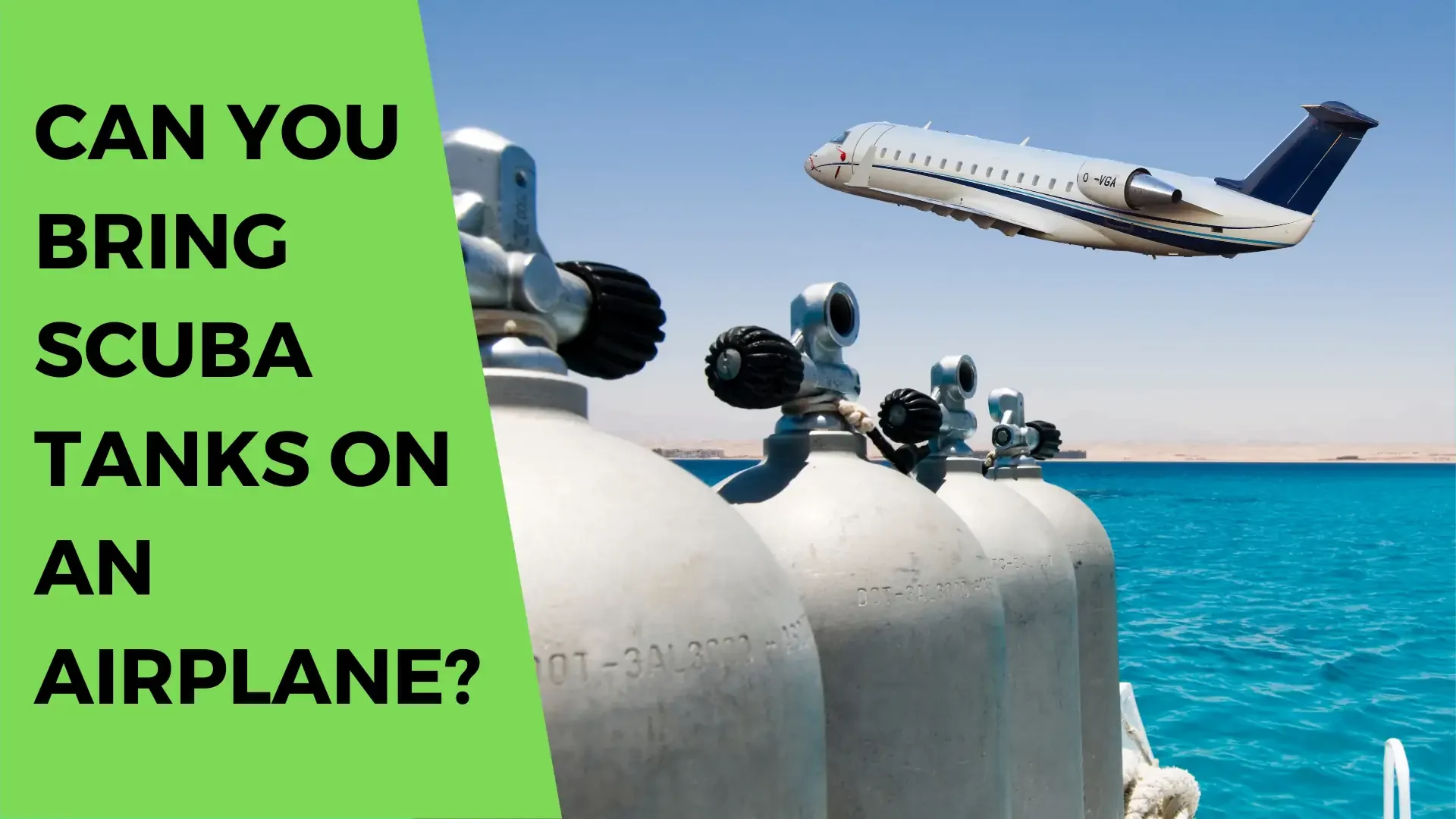Air travel regulations can be a real labyrinth, complete with twists, turns, and more fine print than you can shake a snorkel at. When it comes to hauling those trusty scuba tanks across the sky, there are rules and safety considerations you need to abide by.
I’ll break it down like the components of your favorite dive gear and explore the potential hazards that might make your tanks an airline no-no. Plus, I’ll try to touch down on whether it’s better to bring your tanks along or rent them at your destination, weighing the pros and cons like a trusty dive buddy.
So let’s dive right in and make your dreams of underwater exploration take flight!
Table of Contents
Rules To Comply With While Travelling With A Scuba Tank
Scuba tanks are exempt from restrictions regarding dangerous chemicals if they are completely depressurized or inflated to less than 200 kPa so you’re pretty much free to transport scuba tanks on a commercial flight.
However, to do a comprehensive inspection, airport, and airline security may request that all valves be fully opened. In this way, the valves may be analyzed from any angle.
Why Are the Commercial Airplane Guidelines So Strict Around Scuba Tanks?
If you want to take your SCUBA tank on an airplane, you’ll need to comply with a variety of rules and regulations. The International Air Transport Association (IATA) has published a handbook summarising its procedures and principles. Furthermore, the entire nation is subject to a uniform set of laws.
If you’re flying within the United States, for instance, you’ll need to transport your diving tank without its valve and empty it so that TSA agents can check the contents at any time. Similar rules are used by the TSA and the IATA.
Future iterations of the regulations are possible. This means you need to keep an eye on the IATA website for the latest updates.
As a result, you absolutely cannot bring a filled scuba tank on board a plane. This topic is touched on briefly in the Dangerous Goods chapter of the IATA Reference Manual. It can be moved by decreasing the pressure and opening the valve.
There Are Certain Exemptions
Medical oxygen tanks are exempt from this requirement; nonetheless, the airline must be notified and permitted before a full cylinder can be taken on board.
A scuba tank that is empty or has a pressure of less than 2 bars is not considered a dangerous object. Airlines and airport security agents, on the other hand, may require that valves be fully open for examination.
Getting Past Airport Security with Your Tank in Tow
To get started, open the valve on the scuba tank and let all the air out. Then, using a wrench, disconnect the pony or backup air supply at the valve or regulator. Don’t forget to put the valve in the bag you’re carrying.
To ensure that when you go to reassemble your Spare Air, you have every component you need (including the metal washer, o-ring, and other small pieces), you should store everything in a bag that can be secured with a zip lock.
If you plan on disassembling the cylinder, pack some replacement O-rings just in case. The tank should be wrapped in cardboard or bubble wrap from the bottom to the shoulder or to the place where the tank begins to narrow towards the valve aperture, and then secured with packing tape.
Things to Keep in Mind:
- Wrap the tank securely, but leave the valve opening exposed so it can be inspected by airport security.
- Aluminum storage tanks need extra safeguards. Tanks constructed from the material are more vulnerable to external damage, such as dents, dings, and scratches than those constructed from steel.
- A valid certificate from the MOT inspectorate in your country is necessary for all tanks. Please remember to bring extra o-rings for reassembly.
Pay Attention to The Weight Limit
Make sure you know the airline’s baggage weight and size restrictions by calling ahead. These are dynamic and vary from one airline to another.
What was formerly considered acceptable may have dropped in quality over time. Current industry norms suggest a limit of 50 pounds per bag. Your tank is likely to be the heaviest thing you have to carry.
Consider purchasing flight and equipment insurance as another measure of safety. If you are robbed, the last thing you want to do is buy brand-new tools. It’s always preferable to err on the side of caution while diving into an unfamiliar region.
While traveling back proceed in the same manner that you did at the outset of your journey. However, there are a few essential details to keep in mind. Just make sure your tanks are dry and free of salt and debris.
Isn’t It Better to Just Rent out Tanks at The Dive Site?
Lugging your scuba tanks around adds significant weight and bulk to your baggage, not to mention the hassle of dragging those chunks of metal through layers of airport security.
All the while renting scuba tanks at your destination is naturally more convenient. If you can afford trips to remote dive destinations renting a piece of tank shouldn’t be a concern for your pockets.
I rest my case. Now the choice is yours.
